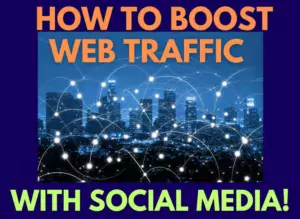Don't Let Website Inactivity Freeze Your SEO! Learn How to Stay Ahead.
You have designed a brilliant website but left it dangle in the Google universe.
Website inactivity however has frozen its Google ranking or even melted it as your competitors heat up.
Without dashboard maintenance, SEO forward-thinking content and social media referral requirements, you are pushed to the frozen world of bad SEO.
Whether you are a seasonal business taking a break, a personal project put on hold, or you have just too many new clients to look after. These periods of website inactivity can have hidden consequences.
Our digital marketing agency in Surrey has experienced just that, with recent major growth in client base, we took the focus off our website to favour our customers. Any competitors out there reading this (we know you are!) have found the same thing.
While your site might seem like it’s peacefully slumbering, the truth is, that its search engine rankings could be slowly freezing over. We caught our decline fast but it seems our local authority in Surrey UK saved us. Let us tell you of our experiences from case studies over the last 6 months from clients who forget to look after their website.
We will talk about
- Lack of New SEO Content
- Broken links & technical issues.
- Losing the Backlink race
- Prevention
The Chilling Effect of No New SEO Content
Why Your Google Ranking Drops with No Fresh SEO Content
Lower Website Relevance:
Your website becomes less relevant to search queries as outdated information doesn’t resonate with current user needs
Stale Information:
Users expect accurate and up-to-date information when they search online. Outdated content fails to meet this expectation, making your website less relevant to user needs.
Imagine searching for “best restaurants in town” and finding a list from years back. It’s likely many of those restaurants have closed or changed significantly, rendering the information irrelevant
Shifting Trends:
Search trends and user behaviour are constantly evolving. By not updating your content, you miss out on opportunities to align with current interests and search patterns.
Think about the rise of sustainable fashion or plant-based diets. A clothing store without content focused on these trends might lose relevance to users actively searching for eco-friendly options
Keyword Drift:
Relevant keywords naturally shift over time. Outdated content might not target keywords users are currently searching for, impacting your visibility in search results. For example, “smartphone” has evolved to “best smartphone with 5G” as technology advances.
Search Engines Prioritises Crawling & indexing active websites
Indexing occurs on websites with new content. Stagnant sites might see reduced crawling frequency, impacting their visibility in search results.
Let us explain why.
Crawling Budget Optimisation
Search engines like Google have limited resources for crawling the web. They prioritise active websites with fresh content as they offer more value to users.
Stagnant websites might receive less frequent crawling, leading to slower indexing of new or updated pages. This means it takes longer for your website to appear in search results for relevant keywords.
Content is a Freshness Signal
Search engines consider the freshness of content when ranking websites. New content indicates an active and relevant website, prompting search engines to crawl and index it more frequently.
Conversely, neglecting updates sends a signal of inactivity, potentially leading to reduced crawling and indexing priority.
Missed Indexing Opportunities
Search engines may not even bother crawling your website if they haven’t seen any updates in a long time. This can lead to important pages being completely missed from the search index, rendering them invisible to users searching for relevant information.
Therefore you must consider using search console to index your pages to push these through if you have suddenly woken up to new content.
Missed Keyword Opportunities Mean Competitors Claim the Prize
New SEO content allows you to target relevant keywords that users are actively searching for. Missing out on these opportunities means competitors can claim the ranking space.
Identifying User Intent
New content allows you to analyse current user search behaviour and understand what information they’re actively seeking.
You can then create content targeting relevant keywords with high search volume, increasing your chances of ranking for those terms.
Think about seasonal trends like “best winter hiking boots” or “holiday gift ideas for kids.” Ignoring these opportunities leaves the keyword landscape open to competitors who are actively creating content aligned with current user intent.
Long-tail Keywords
By continually adding new content, you can target long-tail keywords, which are more specific and have lower competition.
These targeted keywords can drive qualified traffic to your website, even if the individual search volume is lower. For example, instead of just targeting “running shoes,” you could create content targeting “best waterproof running shoes for women with high arch feet.”
Competitor Analysis
Monitoring your competitors’ content strategy can help you identify keywords they’re targeting and gaps in their coverage.
By creating extended and better content targeting these opportunities, you can outrank them and attract users searching for specific information.
Thawing Broken Links & Technical SEO Issues
Even if your website content remains static, the technical aspects need regular attention.
Broken links, slow loading times, and mobile-friendliness issues can create a chilling user experience and send negative signals to search engines.
Imagine a customer trying to access your website through a search result, only to encounter a dead link or a glitchy interface.
Frustration translates into lost conversions and reduced trust in your site’s authority
Eradicating Broken Links and Redirects
Broken links, those frustrating dead ends encountered when clicking, are detrimental to SEO and user experience. They not only signal outdated information but also hinder search engines from efficiently crawling and indexing your website.
Here’s how to tackle them:
- Regular Link Audits: Utilise website analysis tools or SEO plugins to identify broken links.
Fix or Redirect: For broken internal links, update them to point to the correct page. For external links no longer relevant, remove them. For temporarily unavailable pages, consider using a 301 redirect to the most relevant existing page.
Combating Website Weight by Optimising Speed
Website loading speed is a crucial factor in SEO and user engagement. A slow-loading site frustrates visitors and increases bounce rates. Here are some ways to trim the fat and improve speed:
- Image Optimisation: Compress image file sizes without sacrificing quality.
- Minify Code: Remove unnecessary characters and whitespace from your website’s code, making it leaner and faster to load.
- Leverage Caching: Enable caching mechanisms that store website elements on a user’s device, reducing the need to download them repeatedly.
Keeping Your Website Mobile-Friendly: Responsive Design
With the here-to-stay dominance of mobile browsing, a website that isn’t mobile-friendly is like a beautiful garden locked behind a gate.
Responsive design ensures your website adapts seamlessly to different screen sizes, providing an optimal experience for all users and improving SEO.
Below is a chart from Forbes showing the percentage of websites being accessed by mobile devices.

Website Inactivity Brings on the Backlink Blizzard
Backlinks are the golden currency. These links from other websites act as votes of confidence for your content, telling search engines your site is valuable and trustworthy.
The more high-quality backlinks you possess, the higher your website climbs the search engine rankings, attracting more organic traffic and potential customers.
However, the world of backlinks is a dynamic ecosystem, not a static trophy cabinet.
Websites that become inactive, failing to generate fresh, valuable content, risk falling victim to a phenomenon we can call the “Backlink Brrr.” This chilling effect describes the gradual decline in a website’s backlink profile due to inactivity. Here’s how it happens:
1. Content Stagnation: Apathy Breeds Disinterest
Imagine a website that once published informative, engaging content regularly.
Over time, updates cease, and the site becomes a digital graveyard of outdated information.
Websites linking to you expect valuable content.
When yours stagnates, it becomes less relevant and trustworthy.
These once-proud backlinks can turn lukewarm, with linking sites potentially removing your link or burying it deep within their website’s architecture, effectively hiding it from search engines.
2. The Erosion of Trust: Freshness Signals SEO Value
Search engines prioritise websites that consistently deliver fresh, valuable content.
An inactive website sends the opposite message, suggesting a lack of commitment or expertise.
This can lead to search engines downgrading the value of existing backlinks associated with your site.
Even worse, linking websites might disassociate themselves entirely, actively removing your link to avoid being linked to an outdated source.
3. The Missed Opportunity Blizzard: No New Links, No Growth
While you’re hibernating online, your competitors are busy creating compelling content, attracting new audiences, and generating fresh backlinks.
This creates a snowball effect – they gain authority and visibility, while yours dwindles.
Imagine a snowstorm where your competitors are diligently building snow forts (backlinks) that grow larger and more impressive with each passing content creation cycle.
Meanwhile, your own fort, representing your backlink profile, slowly melts away due to inactivity.
Website Activity Stops Hibernation
Once your website’s SEO rankings decline, the journey back to the top can be long and arduous.
It requires consistent effort on WordPress websites , strategic content creation, and technical optimisation.
Remember, the SEO for your niche is constantly changing, and algorithms keep evolving. What worked a year ago might not be effective today.
So, reviving a neglected website requires staying up-to-date with the latest SEO trends and best practices
So, how can you prevent your website from falling into SEO hibernation? Here are some tips:
16 Tips to Keep your Website Active
- Schedule content updates, even if they’re small. Consistency is key, even if it’s just adding new blog posts once a month.
- Regular blog posts: Even monthly marketing blog updates show activity and keep your website fresh. Focus on evergreen topics or seasonal trends relevant to your audience.
- Microblogging: Utilise platforms like Twitter and Instagram for quick updates,news sharing, and engagement. Consistency builds a following and drives traffic back to your website.
- Q&A sessions: Address user questions and concerns on forums or your own website, showcasing expertise and providing valuable content.
- Case studies and testimonials: Share success stories and customer experiences to build trust and attract new leads.
- Curated content: Feature relevant articles, resources, and news from other sources, adding value without creating everything yourself. Use them to boost Social Media Accounts also.
- Image updates: Refresh visuals on your website and social media, keeping things visually appealing and engaging.
- Infographics and data visualisations: Present complex information in an easily digestible format, attracting attention and shares.
- Videos and webinars: Offer educational or entertaining content in video format, increasing engagement and user time spent on your site.
- Podcasts: Utilize audio content to reach a wider audience and delve deeper into topics, promoting your website and expertise.
- Interactive content: Quizzes, polls, and calculators add an interactive element, increasing engagement and user data collection.
- Develop a content calendar: Plan content releases in advance, ensuring consistent updates and aligning with seasonal trends or marketing campaigns.
- Utilise repurposing: Repurpose existing content in different formats (e.g., blog post to infographic) to maximise its reach and impact.
- Schedule social media sharing: Use scheduling tools to automate social media posts, like Instagram marketing, promoting your content, saving time and ensuring regular distribution.
- Collaborate with others: Partner with other businesses or influencers in your niche to create guest posts, joint webinars, or other content collaborations.
- Track and analyse: Monitor content performance using analytics tools to see what resonates with your audience and adjust your strategy accordingly.
Active Websites Stay Healthy and Lead The Rankings
Remember, your website is an investment, and neglecting it can have financial and reputational consequences.
By taking proactive steps to maintain its SEO health, you can ensure it remains visible, and relevant, and attracts valuable traffic even during periods of relative inactivity.
Don’t let your website fall asleep – keep it active and thriving!








